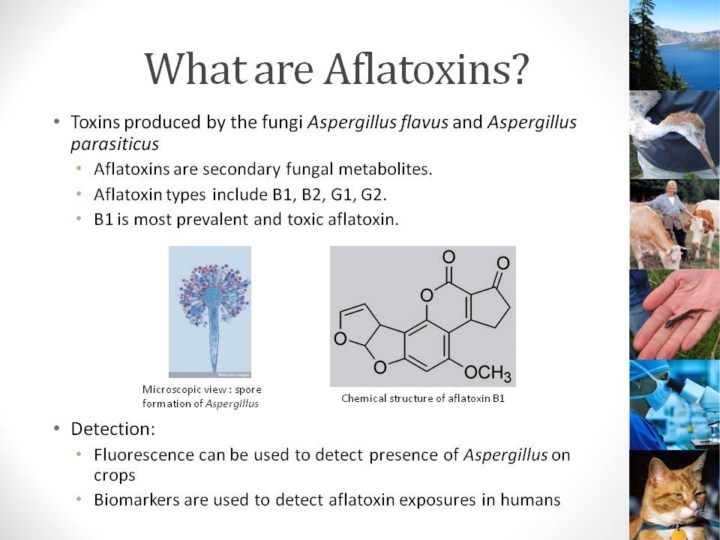| front |1 |2 |3 |4 |5 |6 |7 |8 |9 |10 |11 |12 |13 |14 |15 |16 |17 |18 |19 |20 |21 |22 |23 |24 |25 |26 |27 |28 |29 |30 |31 |review |
 |
Aflatoxin is a mycotoxin produced by the soil fungi Aspergillus flavus (AF) and Aspergillus parasiticus. It exists in multiple types; the primary ones being B1, B2, G1, and G2.1 AFB1 is the most prevalent and most toxic.2 Aspergillus can be detected on commodities such as corn using fluorescence which differentiates between B1 and B2 (blue) or G1 and G2 (green). Biomarkers are used to measure the level of exposure of humans and animals.3, 4 Although large amounts of the fungus may be visible to the naked eye, aflatoxins are often toxic at such low levels that contamination may escape visual detection. Young conidia (asexually produced fungal spores) of A. flavus appear yellow-green in color and darken as the fungus ages.5
After ingestion, aflatoxins are metabolized by cytochrome p450 group enzymes in the liver. Of the metabolites produced, of greatest concern is aflatoxin 8,9-epoxide which can be incorporated into DNA.6 The amount of aflatoxin 8,9-epoxide formed determines species susceptibility. In most experimental animal models, susceptibility to aflatoxin is impacted by liver detoxification systems, genetic make-up, age, and nutritional factors.7 Aflatoxin metabolites are stable and not generally destroyed by heat.8 |